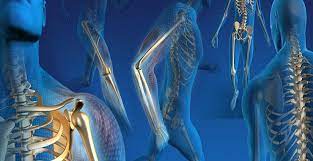The Emergence of COVID-19 to Augment the Patient Lateral Transfer Devices Market Growth
A lateral transfer is shifting a patient from surface to
surface, such as bed to hospital cart, bed to bed, and others. Patient lateral
transfer devices are ideal for transfers and repositioning of supine and
dependent patients. In the recent years, the demand for lateral transfer
devices has increased due to rising incidence of musculoskeletal disorders such
as lower back pain (LBP) in healthcare workers. Hospital staff experience more
low back pain than many other groups, however, the incidence varies among
countries. Lower back pain is one of the most common occupational health
problems that leads to serious emotional, sensory and physical problems for
healthcare workers, especially nurses.
Work activities involving twisting, bending, awkward static
posture, frequent heavy lifting, and psychological stress are regarded as
causal factors for many back injuries. Therefore, the demand for patient lateral
transfer devices has increased across the globe, driving the growth of the patient
lateral transfer devices market. Lateral transfer device is a motorized
mechanical lifting device that turns the bed sheet into a kind of sling to
perform lateral patient transfers. It is a cost-effective solution that help
healthcare workers when there is a limited mobility and the patient needs to be
transferred more easily from a bed, wheelchair, car, bathtub, or toilet. This
in turn is expected to increase the demand for patient lateral transfer
devices.
Growth of the patient lateral transfer devices market is
also driven by the emergence of corona virus (COVID-19), as there is a sudden
rise in the demand for patient lateral transfer services. Moreover, geriatric
population, and those with underlying medical problems, such as cancer, chronic
respiratory disease, diabetes, and cardiovascular disease, are more likely to
develop serious illness. Such factors may also increase the demand for patient
lateral transfer devices in hospitals and other healthcare settings. According
to the World Health Organization (WHO), 95% of COVID-19 deaths due to are
recorded among people aged more than 60 years, and around 50% of all deaths
were recorded among people aged 80 years or older.
Furthermore, obese and overweight people are more likely to
be affected by chronic diseases, requiring hospitalization when the condition
worsens. This in turn increases the demand for lateral transfer devices, as it
is difficult to transport them manually, driving the market growth. However,
lack of knowledge or training among caregivers or healthcare workers for
efficient operation of patient lateral transfer devices limits the use of
patient handling devices and can lead to injuries, which in turn is expected to
restrain the growth of the patient lateral transfer devices market.




Comments
Post a Comment